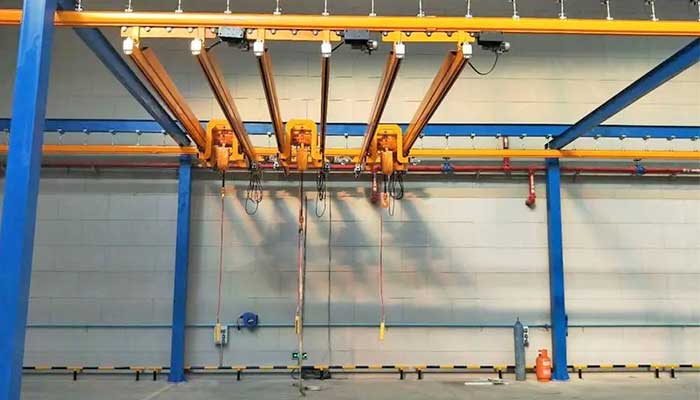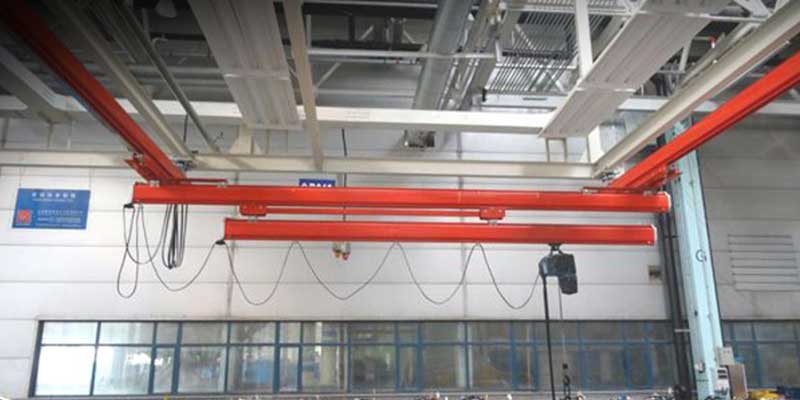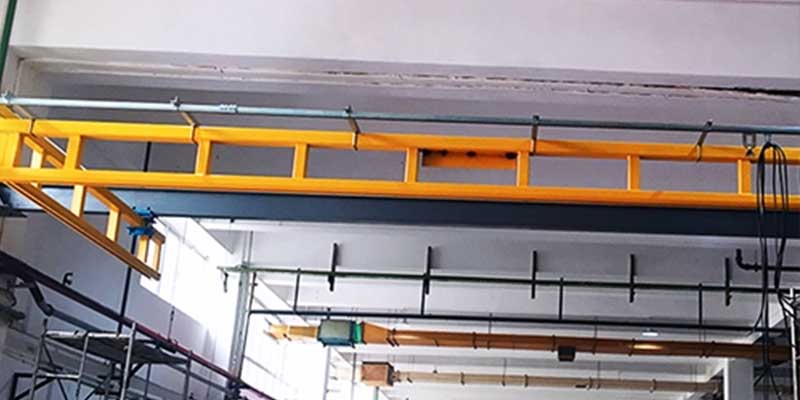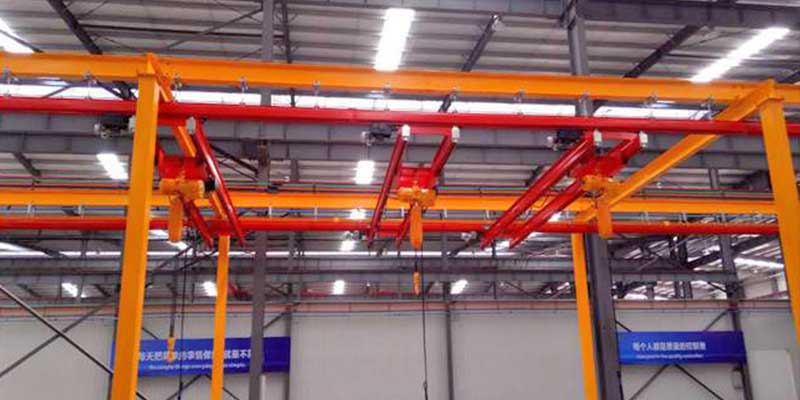
Workstation Crane Bridge Designs for Your Application & Uses
Crane bridge designs for workstations. Standard bridge, Motorized Bridge, telescopic bridge, Fully Trussed Bridge, double beam bridge, etc. Check workstation crane bridge designs.
Workstation crane bridge customizes for your application
Workstation bridge cranes can be highly customized. Some are freestanding type , while others are ceiling-mounted type. They can be outfitted with components that extend the hook approach beyond the standard trolley travel footprint, or they can even be equipped with motorized chain hoist or wire rope hoists for precise part maneuvering and placement.
The bridge type is one neglected focal point, though. Are you planning to raise the trolley clevis height? So a double girder bridge design would be a better option to consider. Will the crane will be operated in a place that is constrained in width and height? You could probably design a Plain Track Bridge into this work zone. Or, if your operation requires a larger or wider work area than the typical trolley movement zone, a cantilevered option will be a suitable option.
These bridge variations and designs are all made to order with the objective of accommodating the needs of the final user. Each of these designs offers a distinct feature or benefit tailored to the needs of that work zone, making them non-interchangeable. The distinctions between each of these bridge types are categorized as follows:
Standard workstation crane bridge
Standard Bridges are the most frequent type of bridge seen in workstation cranes. Cranes for standard bridges are not entirely trussed. The bottom chord's terminals are revealed because the top chord is shorter than the bottom chord. In contrast to a completely trussed alternative, this feature enables the end trucks to be linked to the bottom chord, increasing the height of the trolley clevis.Our company excels in Standard Bridge design and fabrication. Contact us to get your custom crane bridge for your application and lifting requirement.
Standard Bridges are well-liked because of their adaptability. The requirement for a trussed support for the bridge, however, reduces together with the size of the work area. There are two solutions that can handle large load capacities in narrow widths: plain track bridges and tube-reinforced bridges. The load capacity of Plain Track Bridges and Tube-Reinforced Bridges is equal to that of Standard Bridges, however they can only be used over a short span, often no longer than 6' to 8'.

Crane bridge designs for workstations cranes and kbk cranes
Motorized bridge
Motorized bridges are an excellent addition in certain situations. If the load cannot be moved manually due to its size, a motorized bridge can transport it to the desired location. Motorized bridges can also provide accurate movement and positioning within the hook approach region. These areas are frequently equipped with obstacles and obstructions. Moving a large or awkward load by hand can be difficult and dangerous. Wireless remotes on motorized bridges provide the operator with precise control over the load, allowing them to navigate and maneuver safely.
Telescoping bridge
Because standard bridges can be equipped with extensions, they excel at a wide range of solutions. A client may request that the hook approach area extend beyond the runways. This is a common issue when workstations are located near forklift aisles. The forklift operator will frequently place a load outside the standard trolley travel zone, in the forklift aisle. A standard bridge can be outfitted with a telescope to solve this problem. The telescope extensions can be expanded and contracted, allowing the hook approach to extend into forklift aisles or adjacent areas where loads may be placed. Telescopes can also be used to navigate around problematic columns. The Standard Bridge can then increase their trolley approach while maintaining their end truck approach.

Telecoping kbk crane bridge design
Fully trussed bridge
When a client needs to extend the hook approach into an adjacent work area, fully trussed bridges are an option. Cantilevers that extend beyond the standard trolley travel zone are common when a fully trussed bridge is mounted to the runways. If loads are stationed in adjacent areas, the operator can reach beyond the standard trolley travel zone.
Although this is a viable solution, there are some disadvantages. The bridge will never be able to travel beyond any obstructions due to the fixed cantilever. Columns from a freestanding bridge crane or the building's own structure are frequently used as obstructions. Anyone considering a cantilevered Fully Trussed Bridge should be aware that it will reduce the system's end truck approach. Our crane company outperforms many of its competitors in this area.If a Fully Trusted Bridge is the best option, maneuvering around free-standing columns may not be a problem if your area can accommodate 40' runways. Fully Trussed Bridges are common loading dock workstation cranes.

Truss bridge kbk crane - rigid kbk crane
Double girder bridge
If a customer's facility has a low ceiling and cannot accommodate a lot of overall height, the Double Girder Bridge can help. These bridge systems build a trolley that is sandwiched between two parallel bridges. This trolley raises the clevis higher than if it were mounted at the bridge's base. This increases the operator's Trolley Clevis Height.
A double girder bridge has trade-offs. The hook approach will be reduced because the trolley is nested in the center.

Double bridge design -double girder kbk worksation crane
– Articulating Jib
Optimized load mobility is needed in several work environments. A good example of a machine with delicate parts and components that need exact positioning is a CNC machine. For every 100 pounds of load, a workstation bridge crane's normal hoist may be moved with just 1 pound of force. But articulating jib cranes are a terrific alternative if the operator wants to further optimize. These jibs are 360° rotable. With no need to move the hoist trolley or bridge trolley, the operator has more freedom to move a load.
Although an articulating jib can increase the load's movement, it also gives the crane more headroom.
– Manipulators
Manipulator support can also be added to double girder bridges. Due to the advantages they offer in terms of worker ergonomics, manipulators are becoming more and more common in industrial workforces. For our factory to design the best crane for your manipulator, facilities wishing to add a manipulator to a bridge crane must supply with the specs.